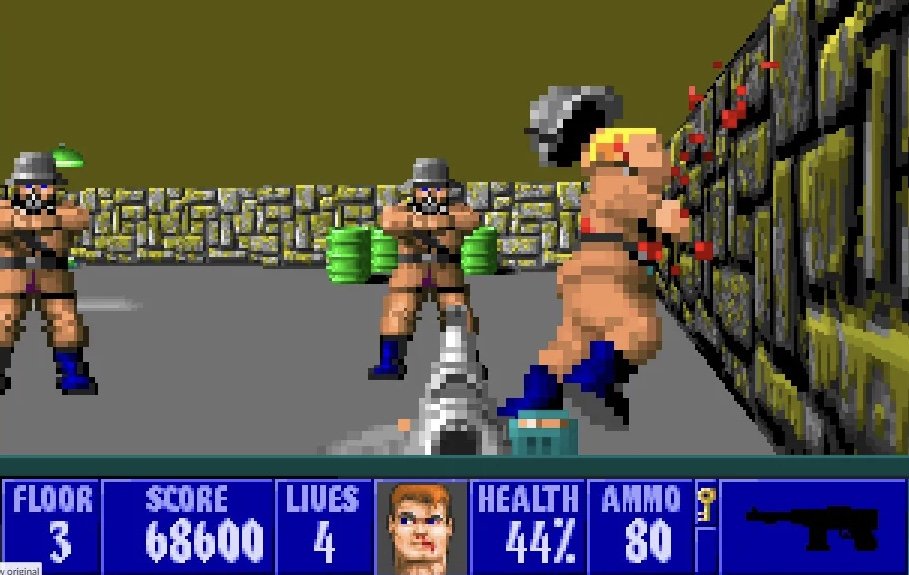Trigger Point: First Person Shooters that inspired esports of today
A Look-Back At The Games That Influenced The FPS Esports Landscape
Bullets flying. Guns blazing. Heads splattering. First-person shooters are truly one of the most exhilarating gaming experiences.
As esports, FPS games like CS:GO, CoD and R6: Siege, gather massive audiences and command large paydays for the players. They require high tactical prowess, tight-knit teamwork and pinpoint precision skills which makes them both a spectacle to watch and a challenge to play.
After coming such a long way, the genre’s humble beginnings are still etched in the memories of old-time gamers. In this post, we’re going to take a trip down memory lane and have a look at some of the most important titles that influenced today’s First Person Shooters esports.
Wolfenstein 3D: The original FPS
The early nineties was the time the FPS genre was established. It all began in 1992 with one of the most well-remembered games in history.
Wolfenstein 3D, created and developed by id Software, introduced the concept of a shooting game in which the player’s perspective is placed behind the protagonist’s eyes.
The idea itself wasn’t completely novel. In 1973 the game Maze was the first to make use of 3D movement through corridors where you roll a ball to find your way to the exit.
Wolfenstein got rid of the ball, replaced it with firearms and plopped in Nazis as enemies to create the very first true FPS experience.
There was no aiming with the mouse, no crouching or jumping. You simply walked around shooting Nazis into a bloody mess. It was glorious and a true revelation at the time.
Simply put, without Maze’s use of 3D and id Software’s ingenuity, we may not have had the FPS esports we play today.
Doom: Taking things up a notch
If mowing down Nazis popularised the whole genre, then blowing up demons on Mars to heavy metal tunes launched it into the stratosphere.
There isn’t a gamer on this Earth that doesn’t know Doom and if there is then their gamer card should be revoked. id Software’s follow-up to Wolfenstein in 1993 blew an entire gaming generation’s mind thanks to a series of edgy ideas that would surely make a lot of current titles blush.
The demonic enemies were hideous and splattered into even more hideous messes.
The weapons were brutal and satisfying thanks to a combination of good sound design and mechanics balancing.
More importantly, the concept of being a space marine stranded on Mars which was in the middle of a demonic apocalypse resonated with a more mature audience which was still not seeing many games built for them.
It was also the first game to introduce strafing, now a movement mechanic found in pretty much every FPS esport.
Quake: Welcome to online FPS
Despite both Wolfenstein 3D and Doom levels being three-dimensional, the games as a whole weren’t truly making use of 3D graphics.
Enter Quake, a title developed by both id Software and Midway Games that brought the goodness of full 3D polygonal graphics to the ever-growing FPS genre.
Aside from establishing the third dimension in these games, Quake also was one of the first games to make use of the now commonly-used keyboard and mouse control combination.
The keyboard retained its control over player movement while the mouse was used to do all the aiming.
Quake 3 - An online deathmatch
It wouldn’t be until its 3rd incarnation, Quake III, that the genre would enter its more competitive phase. Fast-paced, high-flying mobility coupled with tight shooting accuracy was what got players hooked.
Quake III was also one of the games to kick off the LAN party and tournament craze, the precursor to today’s FPS esports.
Counter-Strike: At the sharp end for 20 years
Half-Life may have been one of the best FPS games of all time but it owes its esports pedigree to a mod that turned into the phenomenon called Counter-Strike.
While most multiplayer FPS games focused on deathmatch and capture the flag game modes, Counter-Strike brought objective-based gameplay into the PvP forefront.
Its most popular mode where one side plants a bomb and the other must defuse it made teamwork and communication more prominent without sacrificing high level aiming skills and moment-to-moment combat situations.
Counter-Strike was one of the first games to be played on a more international esports level, with teams operating more like real sports teams, complete with management and sponsors.
Some of the highest-paid FPS esports players are Counter-Strikers, a few of which are veterans from way back in the early 2000s.
Thanks to these games, the FPS genre has been able to grow into one of the biggest esports landscapes of today.
They’ve come a long way since the time of blasting Nazis in the face but it’s without a doubt that the humble beginnings of the earlier titles were what made the genre the powerhouse it is today.











